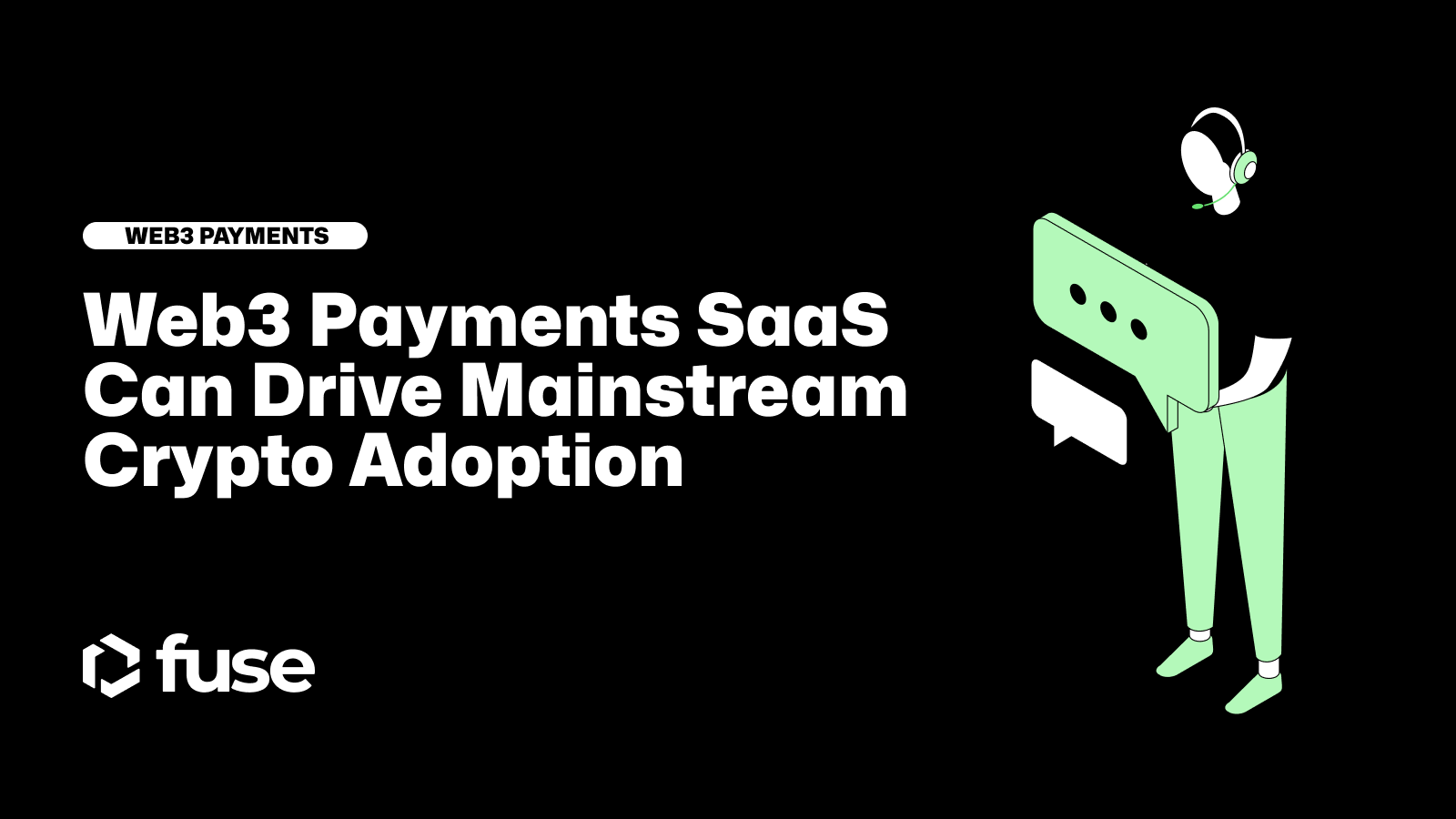This week, we unveiled Fuse 2.0. Aimed at taking on a significant challenge cryptocurrencies face on the road to mass adoption. Delivering a mobile-friendly technology stack to safely open new SaaS business models for Web3 payments.
Existing digital payment rails execute billions of daily transactions. Fuse believes that offering a cheap, flexible, and simple solution to transact with every business on the planet will further drive the usage of digital payments and cryptocurrencies.
Fuse unveils a payments network focused on mainstream business adoption to enable companies that may need to be more technically or crypto-savvy to provide a blockchain-powered user experience that is simple, fast, and secure.
“To drive widespread adoption, we must focus on competing with the dominant players like Visa, Mastercard, and Stripe rather than Ethereum or any other blockchain. So we built a fully interoperable and open-source one-stop shop to help businesses uncover the value added from the decentralization of finance,” says Fuse Network CEO Mark Smargon.
Initially launching in 2019, years of working with ecosystem partners have allowed us to build a robust network, create and provide Ethereum-level tooling tailored for business, and learn which aspects of business are not desirable to decentralize.
Fuse 2.0 heavily provides all aspects required for businesses to explore Web3 payments from the network to core business-ready infrastructure and white-label mobile wallets. Most importantly, outlining a network structure for Fuse 2.0 fit to scale Web3 payments by introducing the Operators and Power Validators concept.

Scaling crypto adoption with everyday payments
CEO Mark Smargon highlights how this structure can drive long-term growth and provide decentralized, scalable Web3 business infrastructure that is easy to navigate and build, introducing the concept of Power Validators and Operators in the Fuse vision. The new structure divides the network into three layers served by merchants, Operators, and validators.
The consumer layer consists of merchants building Web3 applications for their end users using the Fuse tech stack, specifically the Charge platform. Here, fee abstraction is a powerful tool to remove complex blockchain actions and give users a similar experience to what they are used to with Web2 finance apps like Venmo or Revolut.
To do that, transactions are processed, and Operators pay fees, not end users. This forms the business layer and, ultimately, the layer that can drive the mass adoption of crypto through regular Web3 payments.
The final piece of the puzzle is Power Validators. They supply the services Operators require to build functioning Web3 apps such as node infrastructure and oracles. The Operators purchase these services to resell them to their customers, filling the demand side.

Use cases
One Operator already showcasing the power of the Fuse tech stack is Bitazza, with the Freedom Wallet being the centerpiece of the value proposition. The Freedom Wallet is a mobile wallet running on Fuse Network, built using Charge’s API, already used to fuel everyday crypto payments for several small to medium-sized businesses in Southeast Asia.
Fuse firmly believes the new approach can emphasize Operators like Bitazza, drive the next wave of adoption, and get crypto into the hands of new users without the speculative qualities. At the same time helping small to medium businesses become more competitive in the global economy.
In line with the rebrand, Fuse released a new White Paper that charts a course toward a new era of innovation. This will be followed by the highly anticipated 2.0 Roadmap and detailed technical documentation for the developer community.
.svg)
.svg)












